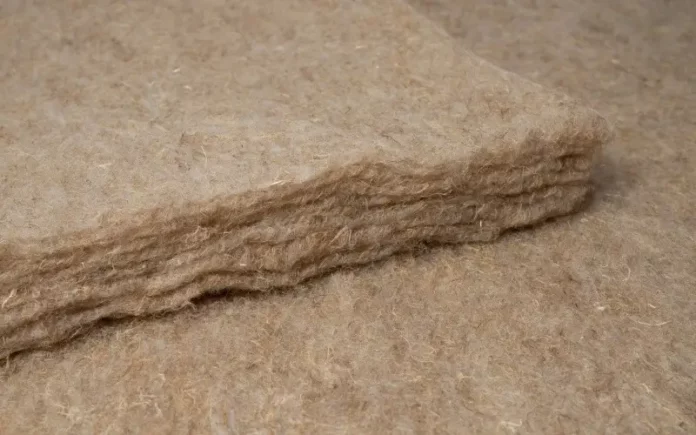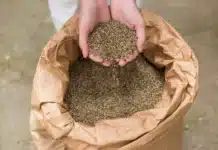Hemp as a material is gaining speed across industries, including health and beauty, textiles, food and more. One of the industries that now utilizes it is in construction. Hemp can be used to create building materials such as hemp-clay bricks and hempcrete. One of the newest hemp innovations is using it as a form of building insulation. HempWool has been pioneered by Hempitecture, a non-woven materials manufacturer.
To start, Hempitecture uses hemp and its optimal carbon-sequestering abilities for healthy, high-quality construction products. Their mission is to use bio-based resources as alternatives to the synthetic and often toxic materials used across industries like construction.
Using their products like Hempcrete and HempWool, Hempitecture aims to maximize environmental sustainability through products with lower levels of embodied carbon. Embodied carbon is the total amount of carbon dioxide emissions that are generated to produce something. Since buildings and their operations generate approximately 40% of the world’s energy consumption and 40% of its carbon footprint, switching to more sustainable alternatives with lower embodied carbon is key.
What is HempWool?
HempWool insulation is made from 90% hemp fibers and 10% binder. It is the only insulation on the market that is carbon negative. This means that architects can lower a building’s embodied carbon footprint by integrating HempWool for a project’s insulation needs. Additionally, the panels are safe to be handled without gloves and can be used for floors, walls and ceilings to provide acoustic and thermal insulation.
Because of its versatility, HempWool can be used for all kinds of interior spaces. This includes buildings, modular homes and even RVs. HempWool’s simple composition also means that it is a healthy building material. It does not have any volatile organic compounds (VOCs) or toxins which can be released into interior spaces. Since we spend 90% of our time indoors, this is vital to creating a safe and healthy interior environment.
Besides its sustainable features, HempWool also has several other useful properties. The material comes in various depths and insulation values, also known as R-values, depending on the specific requirements of each project. HempWool panels also come in standard modular sizes that can be easily cut to size. For installation, the panels use a pressure fit system to keep them in place. This prevents slumping, creasing and sagging, which can hinder thermal and acoustic performance over time.
Furthermore, by utilizing hemp as an insulation material, maximized thermal and acoustic performance is guaranteed. HempWool has high thermal inertia, meaning it is a phase-shift-resistant material that keeps interiors comfortable regardless of the season. This helps slash heating and cooling costs because much of the thermal comfort is regulated by the building envelope. HempWool is also vapor permeable to prevent condensation, mold and damage to the building’s structure.
Overall, by adopting hemp-based solutions such as HempWool in construction, one can achieve optimal thermal and acoustic comfort. Best of all, it is without incurring excessive costs, sacrificing the health of inhabitants and forgoing sustainable design.














